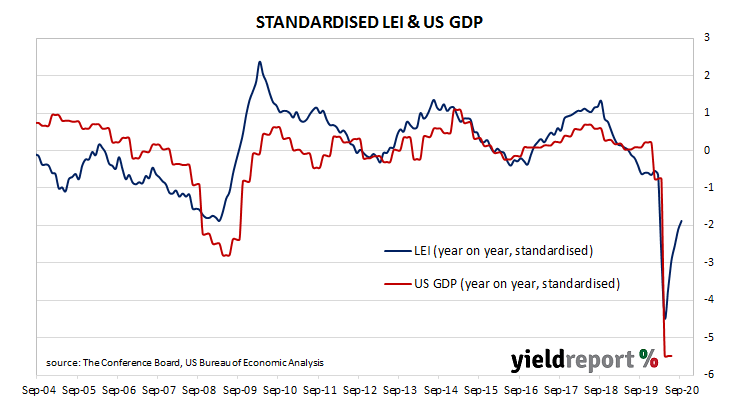Summary: US leading index increases; increase slightly less than expected; August increase revised up; change driven by declining jobless claims, rising housing permits; Conference Board forecasts 0.4% growth in December quarter; slowing index growth rate “suggests US economy could be losing momentum”.
The Conference Board Leading Economic Index (LEI) is a composite index composed of ten sub-indices which are thought to be sensitive to changes in the US economy. The Conference Board describes it as an index which attempts to signal growth peaks and troughs; turning points in the index have historically occurred prior to changes in aggregate economic activity. Readings from March and April signalled “a deep US recession” but more recent readings indicate a recovery is underway, albeit at a slowing pace.
The latest reading of the LEI indicates it rose by 0.7% in September. The result was slightly less than the 0.8% increase which had been generally expected and less than August’s 1.4% after it was revised up from 1.2%. On an annual basis, the LEI growth rate increased from August’s revised figure of -5.1% to -4.2%.
“The US LEI increased in September, driven primarily by declining unemployment claims and rising housing permits,” said Ataman Ozyildirim, Senior Director of Economic Research at The Conference Board.
Changes over time can be large but once they are standardised, a clearer relationship with GDP emerges. The latest reading implies a year-on-year growth rate of -1.0% in December, up from the -1.3% implied for November. The Conference Board forecasts an annualised growth rate of 1.5% for the December quarter, or about 0.4% over one quarter.


